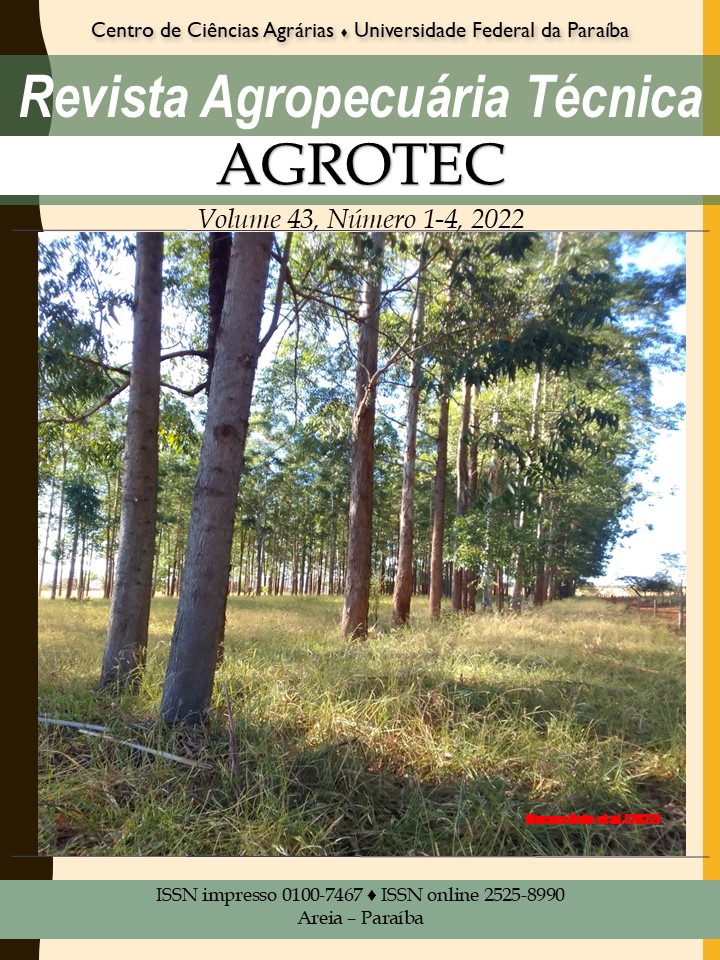Fertilization and seed tuber mass on potato yield under water restriction conditions
DOI:
https://doi.org/10.25066/agrotec.v43i1-4.58027Keywords:
Solanum tuberosum, Drip irrigation, NutritionAbstract
Increasing potato productivity while saving natural resources is a challenge for everyone involved in the potato production chain. In this context, the accurate assessment of productive performance, along with efficiency in the use of resources, plays a crucial role in the search for sustainable and economically viable agricultural practices. Thus, the objective of this study was to evaluate the yield of potato cv. Orchestra cultivated under different fertilizations and seed tuber masses in the water-restricted cropping system. The experiment was arranged in a randomized block design, in a 3x2 factorial scheme with 6 replications, with 3 forms of fertilization: F1 – conventional fertilization, F2 – fertigation according to the crop absorption rate, F3 – fertigation divided into three times; 2 of seed tuber masses: TS1 < 50g and TS2 > 50g. The treatments were submitted to a water regime with 50% replacement of crop evapotranspiration (ETc). The application of nutrients via fertigation following the crop absorption rate ensures a higher yield increase (27.54 t ha-1) for potato cv. Orchestra. Seed tubers used in planting, with a mass of more than 50 g, play a crucial role in increasing yield, grading tubers in larger potatoes and water use efficiency, especially for potatoes subjet to water regime conditions of 50% crop evapotranspiration (ETc).


